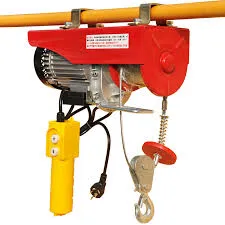


Understanding Fall Protection Devices Ensuring Safety in the Workplace
Fall protection devices are essential tools in various industries, particularly in construction, maintenance, and logistics, where workers are often exposed to elevated work environments. The primary aim of these devices is to prevent accidents and injuries that can occur when employees are working at heights. With the rise in awareness regarding occupational safety, understanding these devices has become crucial for both employers and employees.
At the core of fall protection systems are several types of equipment, including harnesses, safety nets, guardrails, and personal fall arrest systems (PFAS). Each type plays a vital role in safeguarding workers. For instance, a harness is typically worn by workers who are tethered to a secure anchor point. This setup ensures that in the event of a fall, the individual is arrested before they can hit the ground, significantly reducing the risk of serious injury or death.
Safety nets are another effective fall protection strategy. These nets are placed below work areas where employees are at risk of falling. They are designed to catch individuals if they do lose their footing, providing a secondary line of defense. While safety nets can be particularly effective in large construction sites, they require regular inspection and maintenance to ensure their integrity and effectiveness.
Guardrails are often installed along edges of elevated surfaces, providing a physical barrier that prevents workers from inadvertently stepping off the edge. They can be permanent fixtures in buildings and construction sites or temporary solutions during projects. Effective guardrail systems need to meet specific safety standards to offer genuine protection.

Personal Fall Arrest Systems (PFAS) are comprehensive systems that include other devices such as lanyards, connectors, and anchors, in addition to harnesses. These systems are particularly useful in scenarios where other forms of protection are not feasible. Proper training in the use of PFAS is essential, as improper use can lead to severe consequences.
To ensure that these devices are effective, regular training and education are paramount. Workers should be trained on how to properly wear and use fall protection devices, as well as understand the potential hazards associated with their work environment. Employers also have a responsibility to conduct regular inspections and maintenance of the equipment to ensure it remains in good working condition.
In addition to training, implementing a comprehensive fall protection plan can significantly reduce the risks associated with working at heights. Such a plan should include hazard assessments, identification of fall risks, and the selection of appropriate fall protection methods. Engaging workers in the development and execution of these plans can also enhance safety culture and responsibility on the job site.
In conclusion, fall protection devices are indispensable in creating a safe work environment for employees operating at heights. By understanding and implementing the correct fall protection measures, both employers and workers can work together to minimize risks and promote safety in the workplace. As industries continue to evolve, ongoing education and commitment to safety will remain essential for protecting the workforce.



